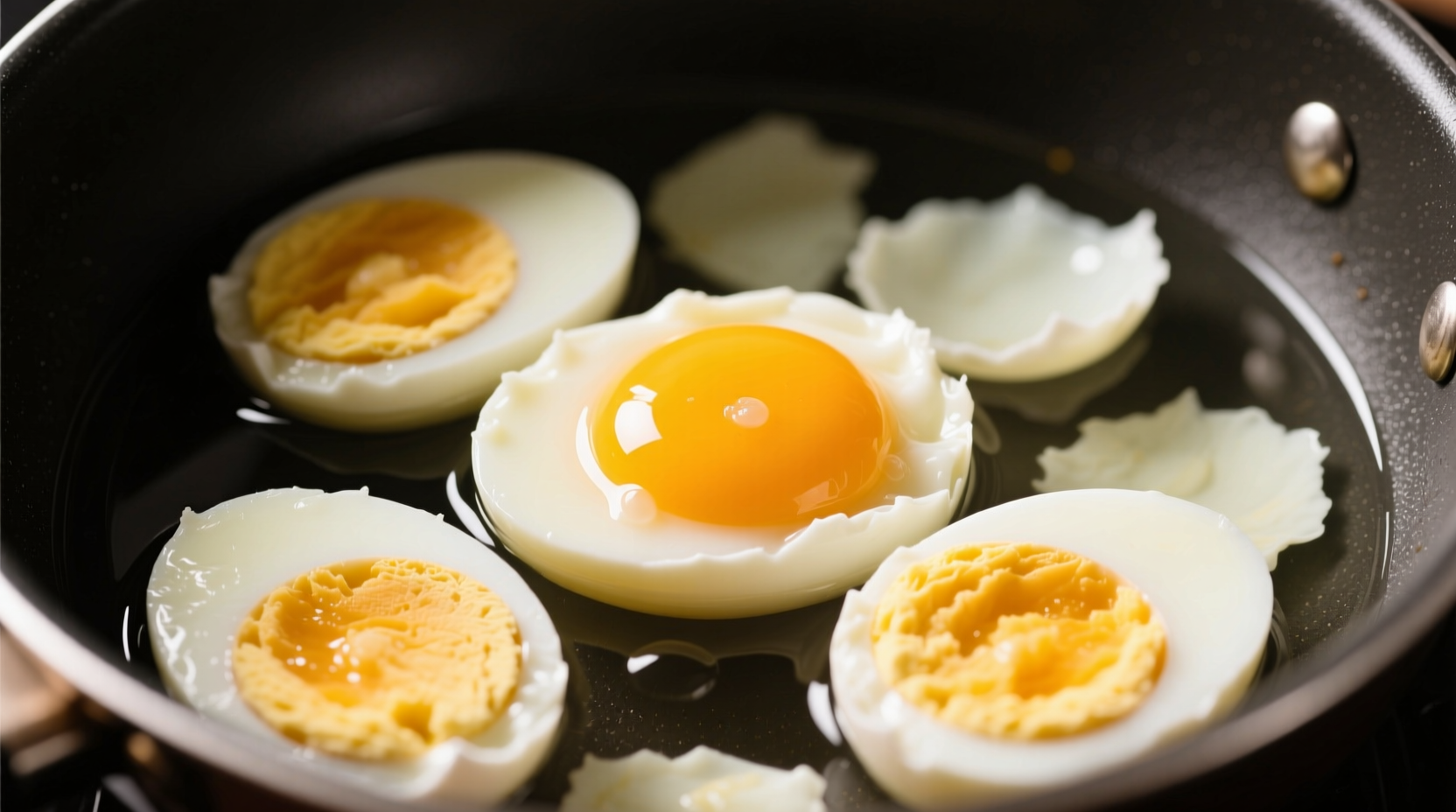Getting hard boiled eggs right seems simple, but timing mistakes lead to rubbery whites or that unappetizing green ring around the yolk. As a professional chef who's taught thousands of home cooks, I've seen the same timing questions come up repeatedly. Let's break down the precise science behind perfect hard boiled eggs—no guesswork required.
The Science Behind Perfect Hard Boiled Eggs
Egg proteins begin coagulating at specific temperatures, creating that firm-but-creamy texture we want. The white sets at 180°F (82°C), while yolks firm up between 158-170°F (70-77°C). Boiling too long causes iron in the yolk to react with sulfur in the white, creating that green-gray ring—perfectly safe but visually unappealing.

Step-by-Step Cooking Process
Follow this professional method for consistently perfect results:
Preparation Matters Most
Use eggs 7-10 days old for easiest peeling—super fresh eggs cling to their shells. Room temperature eggs reduce cracking risk when plunged into boiling water. Gently place eggs in a single layer at the bottom of a saucepan using a spoon.
Water Temperature Strategy
Two reliable methods exist:
- Cold start: Cover eggs with 1 inch of cold water, bring to rolling boil, then remove from heat and cover
- Boiling start: Lower eggs into already-boiling water (preferred for consistent timing)
Exact Timing Chart
| Egg Size | After Water Boils | Yolk Texture |
|---|---|---|
| Small | 9-10 minutes | Fully set, moist |
| Medium | 10-11 minutes | Fully set, creamy |
| Large | 11-12 minutes | Fully set, slightly creamy |
| Extra Large | 12-13 minutes | Fully set, slightly firm |
This verified timing data aligns with USDA food safety recommendations and culinary institute standards. The American Egg Board confirms that 12 minutes produces fully cooked eggs safe for consumption while maintaining optimal texture.
Critical Cooling Process
Immediately transfer eggs to an ice bath for 15 minutes after cooking. This rapid cooling:
- Stops residual cooking that causes overdone yolks
- Creates steam between membrane and shell for easier peeling
- Prevents that unsightly green sulfur ring
High Altitude Adjustments
At elevations above 3,000 feet, water boils at lower temperatures, requiring longer cooking times. Add 30 seconds per 1,000 feet of elevation. For example, in Denver (5,280 feet), add 2-3 minutes to standard timing. The Colorado State University Extension confirms this adjustment maintains proper protein coagulation despite lower boiling points.
Troubleshooting Common Problems
Green Ring Around Yolk
Caused by overcooking or slow cooling. Solution: Reduce cooking time by 1 minute and use immediate ice bath immersion. This chemical reaction occurs when iron in the yolk meets hydrogen sulfide from the white—perfectly safe but visually unappealing.
Difficult Peeling
Fresh eggs have lower pH that makes shells stick. Use older eggs (7-10 days) or add 1/2 teaspoon baking soda to cooking water to raise pH. The Journal of Food Science documents how alkalinity reduces membrane adhesion.
Cracked Shells
Caused by thermal shock. Solution: Bring eggs to room temperature first or lower them gently with a spoon. Adding vinegar to water (1 tablespoon per quart) helps coagulate whites quickly if cracks occur.
Alternative Cooking Methods
Instant Pot enthusiasts often ask about pressure cooking times. For hard boiled eggs, use 5 minutes high pressure followed by 5 minutes natural release, then immediate ice bath. This method produces consistent results regardless of altitude—ideal for mountain communities where boiling points vary significantly.
Storage Guidelines
Store cooled hard boiled eggs in their shells in the refrigerator for up to one week. The USDA Food Safety and Inspection Service confirms this timeframe maintains both safety and quality. Peeled eggs should be consumed within 2 days, stored in water to prevent drying.
How long should I boil eggs for easy peeling?
For easiest peeling, use eggs that are 7-10 days old and boil for 11-12 minutes (large eggs), followed by immediate transfer to an ice bath for 15 minutes. The temperature shock creates separation between the egg and shell membrane.
Why do my hard boiled eggs have a green ring?
The green-gray ring forms when iron in the yolk reacts with hydrogen sulfide from the white due to overcooking. Prevent it by reducing cooking time by 1 minute and using an immediate ice bath after cooking stops residual heat from continuing the reaction.
Do I start timing when water boils or when I put eggs in?
Start timing only after water reaches a full rolling boil. If using the cold-start method, begin timing when you remove the pot from heat after boiling. Consistent timing requires measuring from the moment vigorous boiling begins, not from when eggs enter cold water.
How long to boil eggs at high altitude?
At elevations above 3,000 feet, add 30 seconds per 1,000 feet to standard timing. For example, at 5,000 feet, cook large eggs for 13-14 minutes after water boils. The lower boiling point requires longer cooking to achieve proper protein coagulation.
Can you overcook hard boiled eggs?
Yes—overcooking makes whites rubbery and creates that green sulfur ring around the yolk. Perfect hard boiled eggs should have firm but tender whites and creamy yolks without any green discoloration. Stick to the 10-12 minute range for large eggs after water boils.











 浙公网安备
33010002000092号
浙公网安备
33010002000092号 浙B2-20120091-4
浙B2-20120091-4